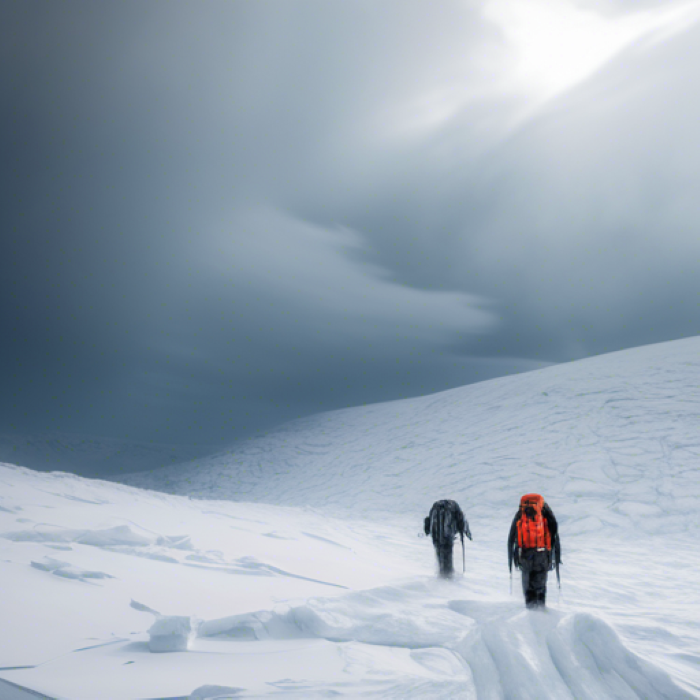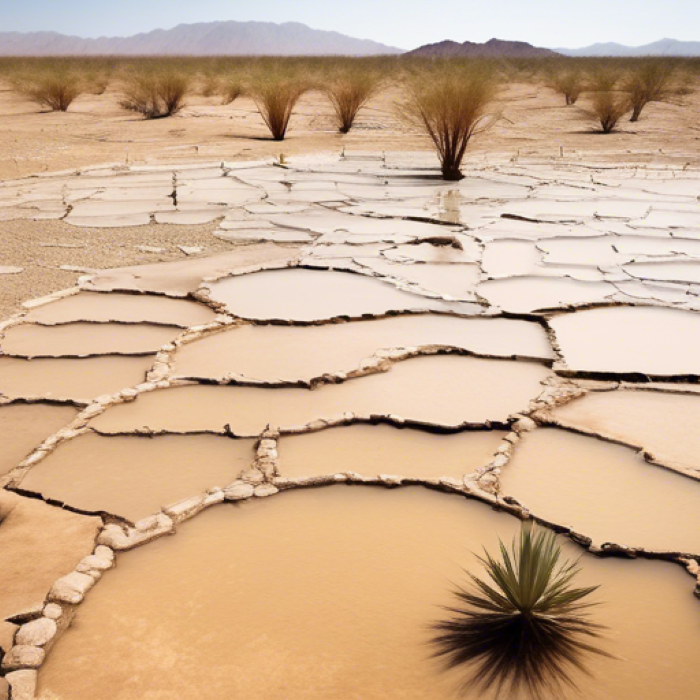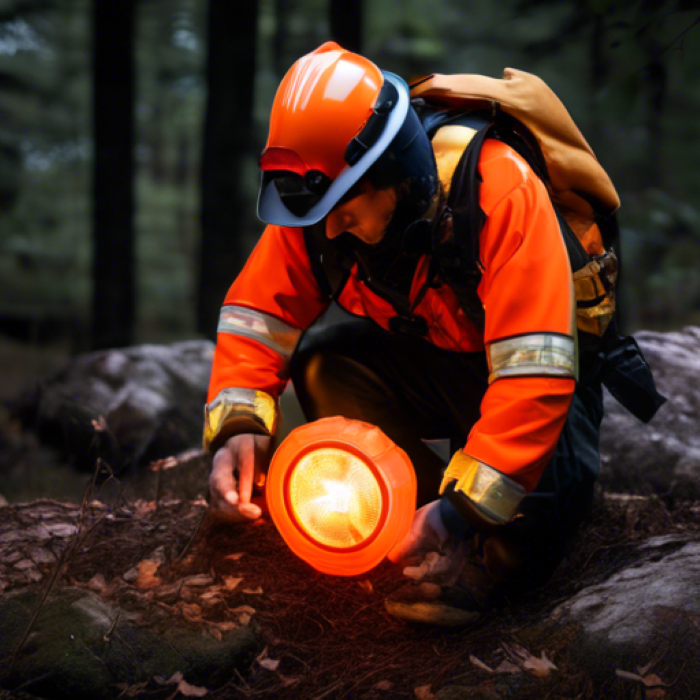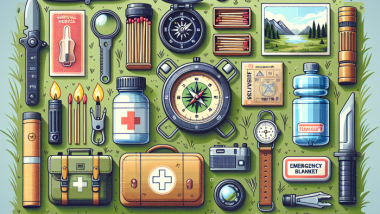In the vast expanse of the wilderness, mastering survival skills goes beyond the basics when faced with extreme environments. From frigid arctic landscapes to scorching deserts, the ability to navigate and thrive in these harsh conditions requires specialized knowledge and preparation. This article delves into the essential techniques and strategies needed to not just survive, but thrive, when nature’s challenges push you to your limits. Discover how to adapt, build shelters, source food and water, and utilize crucial tools in the unforgiving wilderness. Embark on a journey towards mastering the art of survival in the most extreme environments.

Understanding the Challenges of Extreme Environments
Navigating extreme environments in the wilderness presents formidable challenges that demand a profound understanding of nature’s complexities. From the bone-chilling cold of snow-laden terrains to the scorching heat of arid deserts, survival hinges on recognizing the unique threats each environment holds. In these harsh landscapes, the importance of wilderness survival training cannot be overstated. Equipped with knowledge and skills, one can transform a dire situation into a conquerable obstacle. As acclaimed survivalist Cody Lundin once said, “The more you know, the less you carry.” Mastery of survival begins with respect for nature’s power and an awareness of one’s limitations. By delving deep into the challenges posed by extreme environments, one can unlock the secrets to thriving against all odds.
Essential Gear and Tools for Survival
When venturing into extreme environments, having the right wilderness survival kit is paramount. This essential gear should include items like a versatile wilderness survival knife, durable shelter materials, fire-starting tools, signaling devices, water purification methods, and high-energy foods. Beyond the basics, specialized equipment such as GPS devices, satellite phones, and emergency beacons can be crucial for signaling for help in remote areas. Proper wilderness survival training ensures that individuals know how to utilize these tools effectively and efficiently in emergencies. Additionally, referring to reputable wilderness survival books and guides can provide valuable insights into choosing the right gear for specific environments and scenarios. Mastering the selection and use of essential gear and tools is a fundamental aspect of preparing for survival in the wilderness.
Navigating Terrain and Establishing Shelter
Navigating terrain and establishing shelter are foundational skills in wilderness survival training. Understanding how to read maps, use a compass, and identify key landmarks can be crucial in finding your way through unfamiliar environments. When it comes to shelter, knowing how to construct improvised shelters using natural materials from the surroundings can provide protection from the elements and increase your chances of survival. A wilderness survival kit should include tools for navigation such as a compass, map, and GPS device, as well as items for shelter building like a tarp, paracord, and a multi-tool. By honing these skills and being prepared with the right gear, you can navigate challenging terrains with confidence and create safe havens to weather the wilderness’s harshest conditions.
Firecraft: Building and Maintaining Fires
Mastering firecraft is a fundamental skill for wilderness survival in extreme environments. Building and maintaining fires not only provides warmth and comfort but also serves as a vital tool for cooking food, purifying water, and signaling for rescue. To start a fire successfully, you must gather dry, combustible materials such as tinder, kindling, and fuel wood. Understanding fire-starting methods like friction, sparks from a wilderness survival knife, or using a fire starter from your survival kit is crucial. Once the fire is lit, maintaining it requires adding wood gradually to sustain a steady flame. Knowing how to position the fire, protect it from wind and moisture, and safely extinguish it when no longer needed are equally important skills. By honing your firecraft abilities, you enhance your chances of survival and comfort in the unforgiving wilderness.
 water in Arid Landscapes" class="wp-image-490" srcset="https://helpsaveyou.com/wp-content/uploads/2024/06/Arid-Survival-700.png 700w, https://helpsaveyou.com/wp-content/uploads/2024/06/Arid-Survival-700-300x300.png 300w, https://helpsaveyou.com/wp-content/uploads/2024/06/Arid-Survival-700-150x150.png 150w" sizes="(max-width: 700px) 100vw, 700px" />
water in Arid Landscapes" class="wp-image-490" srcset="https://helpsaveyou.com/wp-content/uploads/2024/06/Arid-Survival-700.png 700w, https://helpsaveyou.com/wp-content/uploads/2024/06/Arid-Survival-700-300x300.png 300w, https://helpsaveyou.com/wp-content/uploads/2024/06/Arid-Survival-700-150x150.png 150w" sizes="(max-width: 700px) 100vw, 700px" />Sourcing water in Arid Landscapes
In arid landscapes where water is scarce, sourcing this essential element becomes a critical aspect of wilderness survival. Knowing how to find and extract water can mean the difference between life and death. Look for signs such as vegetation, animal trails, or rocky outcrops that may indicate the presence of water sources underground. Utilize techniques such as digging a solar still or constructing a transpiration bag to collect moisture from plants. Remember to purify any water you find before consumption to avoid harmful pathogens and contaminants. In your wilderness survival training, practice different methods of water sourcing to increase your chances of staying hydrated in the harsh conditions of arid environments. Include water purification tablets or a portable filter in your wilderness survival kit to ensure access to safe drinking water when venturing into these challenging landscapes.
Foraging for Edible Plants and Insects
Foraging for edible plants and insects is a crucial skill in wilderness survival training, providing sustenance when food sources are scarce. While carrying a wilderness survival kit with essential tools is important, knowing which plants and insects are safe to eat can mean the difference between starvation and survival. Wilderness survival books often highlight common edible plants and insects, offering valuable guidance on identification and preparation. A wilderness survival knife is a versatile tool for foraging, allowing you to harvest plants and insects safely. Remembering the principles outlined in a wilderness survival guide, such as avoiding toxic species and performing a taste test before consuming unfamiliar foods, can prevent potential hazards. Mastering the art of foraging expands your survival repertoire, ensuring you can thrive even in the most challenging environments.
Hunting and Trapping Techniques
Hunting and trapping techniques are invaluable skills for wilderness survival, providing sustenance when resources are scarce. In extreme environments, knowing how to procure food through hunting and trapping can mean the difference between survival and starvation. Utilizing a wilderness survival knife and the knowledge from wilderness survival training, one must understand the principles of tracking, camouflage, and setting effective traps. Wilderness survival books can offer insights into animal behavior and trapping methods, enhancing one’s ability to secure food sources. Developing proficiency in these techniques requires practice and patience, honing the ability to read signs of wildlife and adapt hunting strategies to the environment. Mastering hunting and trapping techniques not only provides nourishment but also instills a sense of self-reliance and connection with the natural world in the challenging realm of wilderness survival.
Surviving Extreme Cold: Hypothermia Prevention
Surviving extreme cold environments requires more than just bundling up – it demands a comprehensive approach to hypothermia prevention. In wilderness survival training, understanding the early signs of hypothermia is crucial. Building a well-insulated shelter using your wilderness survival kit can provide vital protection against freezing temperatures. Equipping yourself with knowledge from wilderness survival books on cold weather survival techniques is essential. A quality wilderness survival knife is invaluable for tasks such as cutting firewood and building shelters in icy conditions. Following a wilderness survival guide for hypothermia prevention involves maintaining dry clothing, staying hydrated, and regularly consuming high-energy foods to fuel your body’s internal heating system. Mastering these techniques can mean the difference between succumbing to the cold and emerging victorious in extreme environments.
Surviving Extreme Heat: Dealing with Dehydration
Surviving extreme heat in the wilderness is a formidable challenge that requires keen awareness and strategic planning to prevent dehydration. Dehydration can quickly set in due to excessive sweating and the body’s increased demand for water in hot conditions. To combat this, it’s crucial to have a well-equipped survival kit that includes ample water supply or the means to purify found water sources. Training in wilderness survival teaches important skills like rationing water and recognizing early signs of dehydration, such as dry mouth and fatigue. Carrying a reliable wilderness survival guide can provide valuable information on locating water sources and staying hydrated in extreme environments. Additionally, wearing appropriate clothing to shield from the sun’s rays and resting during peak heat hours can help conserve energy and minimize water loss. By mastering techniques to deal with dehydration, individuals can enhance their chances of surviving and thriving in scorching wilderness conditions.
First Aid in Wilderness Emergencies
In the unpredictable wilderness, knowing basic first aid can be a matter of life or death during emergencies. Wilderness survival training often includes essential first aid techniques tailored to outdoor scenarios. A well-equipped wilderness survival kit should always contain items like bandages, antiseptic wipes, tweezers, and pain relievers to address common injuries. It’s imperative to have wilderness survival books that cover first aid procedures specific to remote locations. A reliable wilderness survival knife can serve various purposes, including cutting bandages or fashioning splints in emergencies. Understanding how to apply first aid in the wilderness, such as treating cuts, burns, sprains, or insect bites, is crucial for maintaining health and safety in isolated environments. A comprehensive wilderness survival guide should include detailed sections on wilderness first aid to ensure preparedness during unforeseen situations.

Building Signaling Devices for Rescue
Building signaling devices for rescue in wilderness survival scenarios is crucial for increasing your chances of being found and rescued. Utilizing tools from your wilderness survival kit, such as mirrors, whistles, signal flares, and brightly colored cloth, can help create effective signals for search and rescue teams. Knowing how to use these signaling devices correctly is essential, as signaling for help in the right way can make a significant difference in your rescue timeline. Wilderness survival training often includes instruction on constructing and using signaling devices, emphasizing the importance of visibility and distinctiveness in signaling techniques. By incorporating signaling device preparation into your wilderness survival training and practice, you enhance your readiness to attract attention and secure a successful rescue in extreme environments.
Psychological Resilience in Isolation
Psychological resilience in isolation is a critical aspect of wilderness survival training. When faced with extreme environments, the mental fortitude to endure isolation can be as crucial as physical skills. In the vast wilderness, individuals may experience feelings of loneliness, fear, and despair, which can threaten their survival. To combat these challenges, wilderness survival guides emphasize the importance of maintaining a positive mindset, staying focused on goals, and finding purpose in daily tasks. Building mental toughness through visualization exercises, meditation, and self-reflection can help individuals navigate the psychological challenges of isolation. By understanding the psychological impacts of being alone in the wild, individuals can develop a resilient mindset that enhances their survival capabilities and increases their chances of thriving in extreme environments.

Training and Preparation for Extreme Scenarios
Training and preparation are the cornerstones of mastering wilderness survival in extreme scenarios. Engaging in wilderness survival training programs not only equips individuals with essential skills but also instills the confidence needed to face the unexpected challenges of nature. These programs cover a range of topics, from navigation techniques to building shelters and sourcing food sustainably. Additionally, having a well-equipped wilderness survival kit tailored to the specific environment is crucial for preparedness. Books and guides on wilderness survival serve as valuable resources, offering in-depth knowledge on survival tactics and providing insights into different terrains. A quality wilderness survival knife is a versatile tool that aids in tasks such as cutting wood, building shelters, and food preparation. By investing time in training and preparation, individuals can enhance their ability to navigate and thrive in extreme wilderness scenarios.
Conclusion: Mastering the Art of Survival in Extreme Environments
In conclusion, mastering the art of survival in extreme environments is a transformative journey that encompasses skill, knowledge, and resilience. With proper wilderness survival training and the right wilderness survival kit, individuals can navigate harsh landscapes with confidence. By delving into wilderness survival books and learning from experienced guides, one can enhance their understanding of essential techniques and strategies. The wilderness survival knife becomes a trusty companion, aiding in tasks from crafting to self-defense. Ultimately, the wilderness survival guide serves as a beacon of wisdom, guiding adventurers through challenges and triumphs. Through training, preparation, and a deep respect for the natural world, mastering survival skills in extreme environments is not just a feat but a testament to human adaptability and determination.


